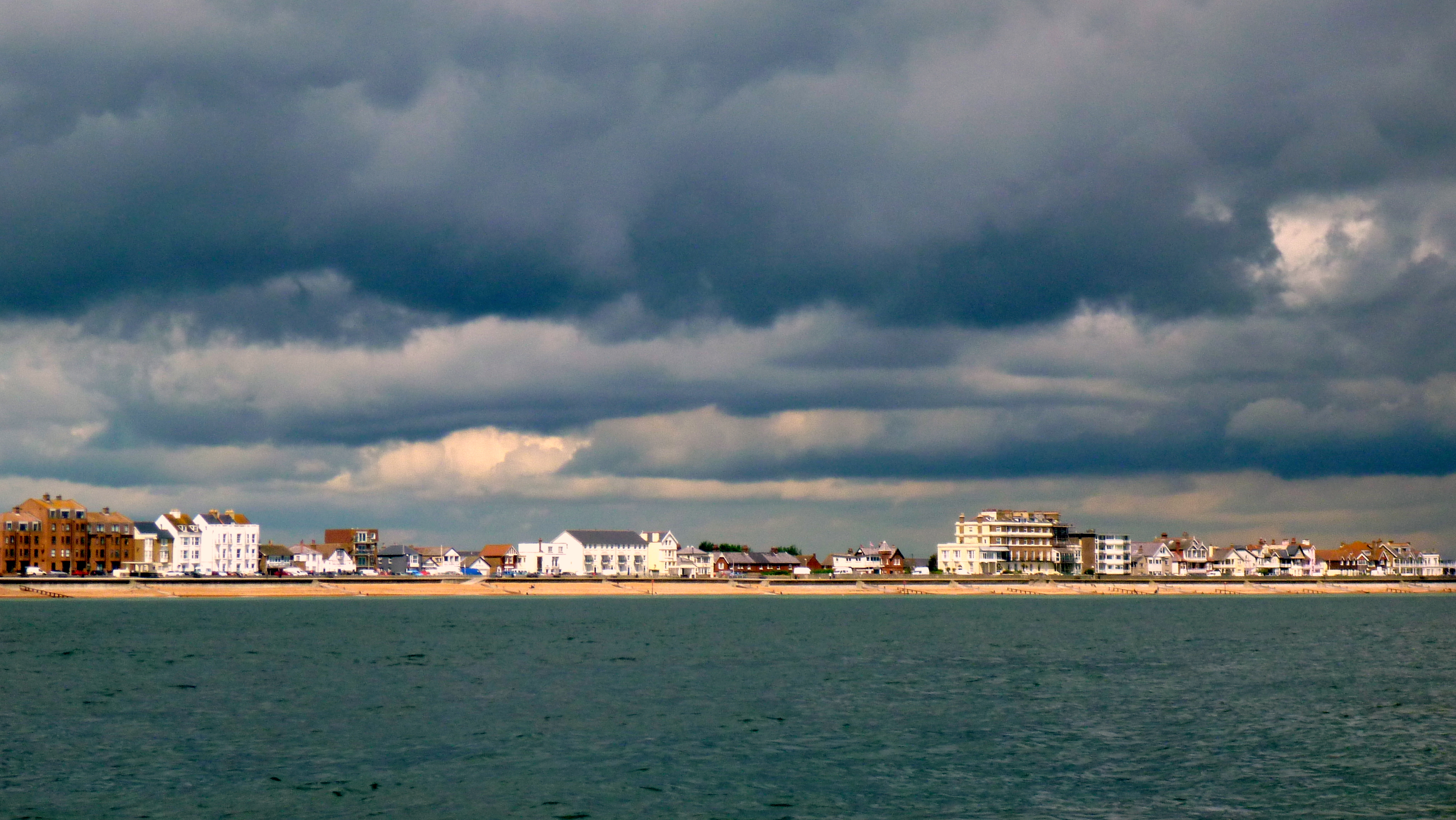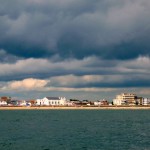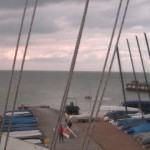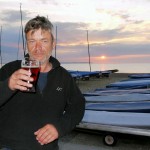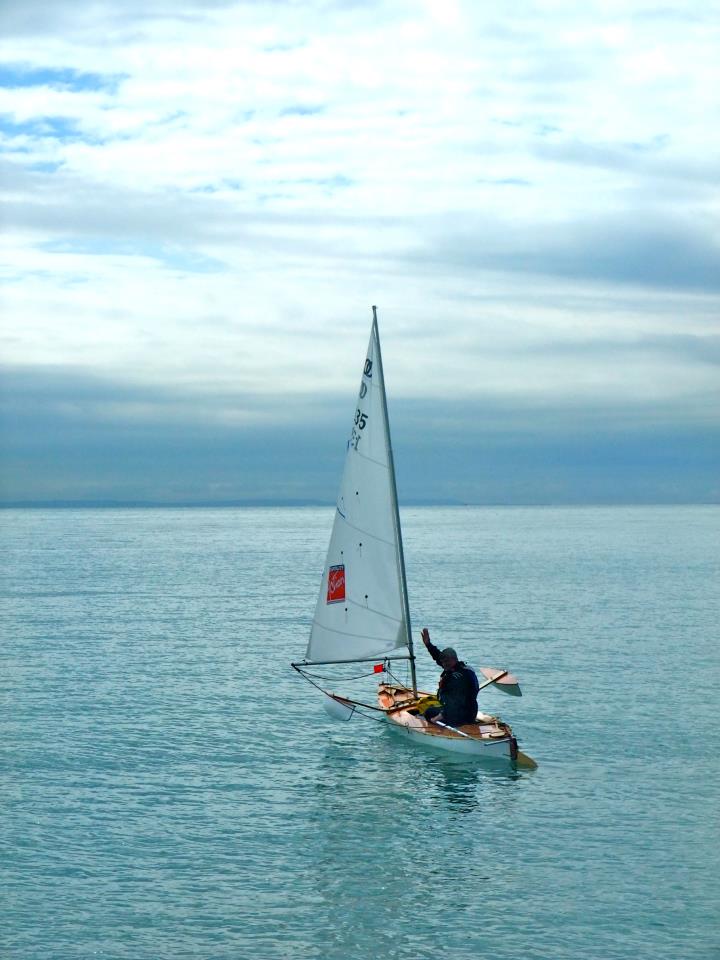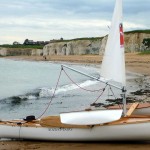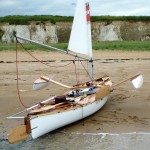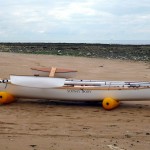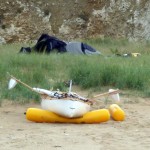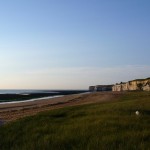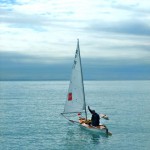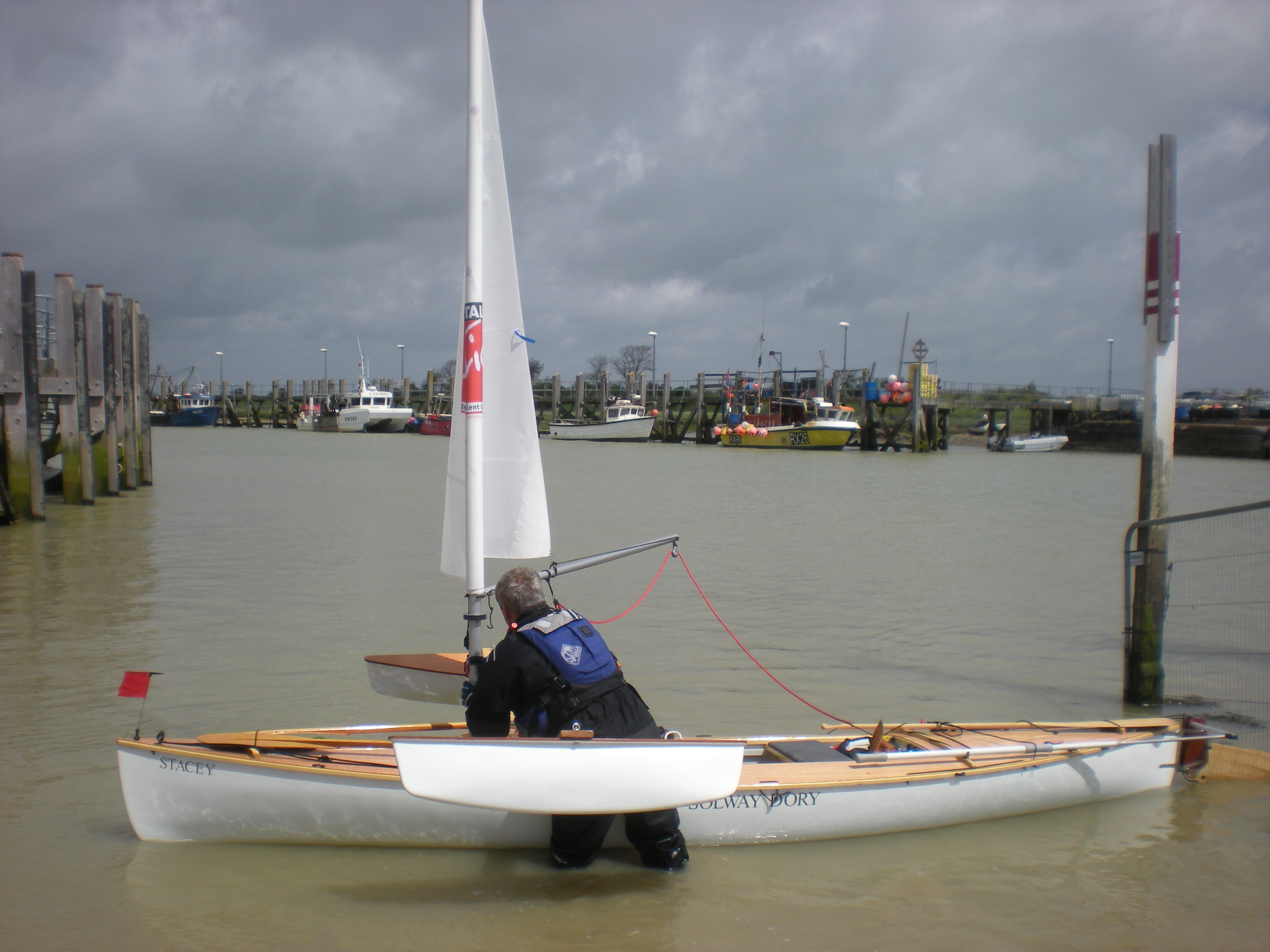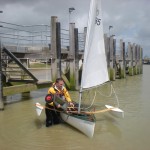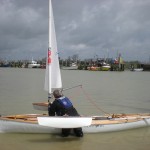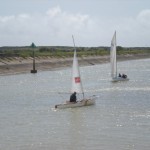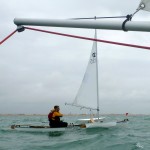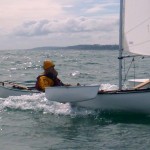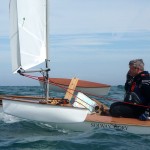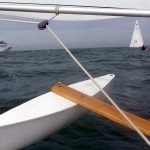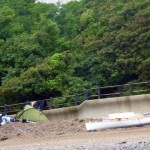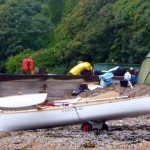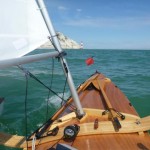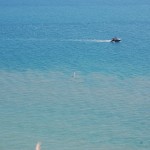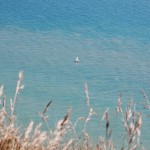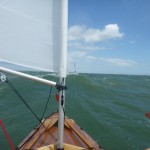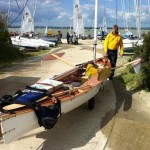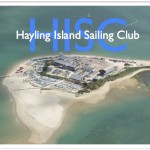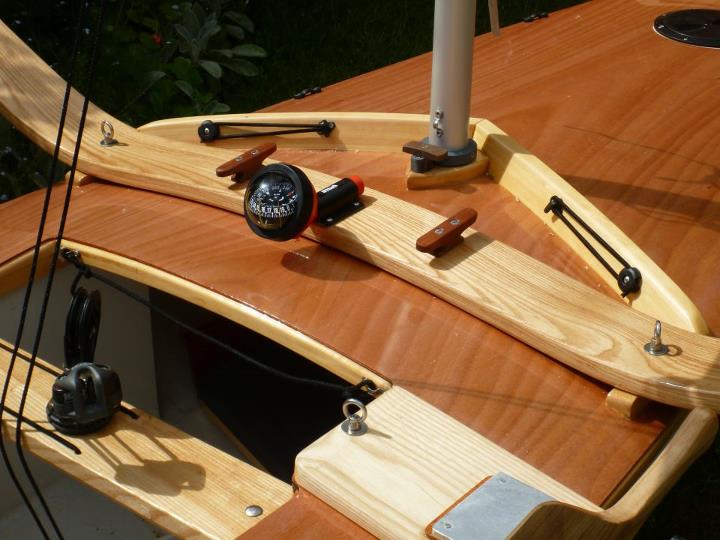The photo shows the Rye Harbour entrance at low tide but winding back to Wednesday evening at Hastings …… Several St Leonards and Hastings Sailing Club members and I manhandled Stacey onto her trolley and we dragged her up the steep beach over the loose shingle. I was feeling tired and bedraggled but relieved to be ashore. After much discussion about the boat, its design, where I’d come from and where I might stay for the night, one of the club members, Hugh, generously offered to put me up.
By the time we’d pulled Stacey into their underground boathouse (facing the beach and under the promenade pavement), showered, changed and chatted over a beer in the bar, the sun had set and it was nearly ten pm. So we picked up a shish kebab each and ate them in Hugh’s very spacious and beautiful kitchen, which he’d recently finished building himself – as a sympathetic extension to a large Georgian looking house with his joinery workshop at the bottom of the garden. Yet again, I’d been helped out by the generosity of strangers and I’m very grateful to all I met briefly at the sailing club and particularly to Hugh who took me into his home and made me welcome.
Launching dinghies at St Leonards and Hastings Sailing Club can also present a few challenges. Hugh was concerned that if I didn’t launch near high tide I might miss the narrow channel dynamited through a reef, so suggested I launch as soon as possible after high water in the morning. Going eastward, this would mean sailing upwind against the tide for 5 hours, until it turned in my favour, but there was little choice and I hoped that a change in wind direction might enable me to cover some miles after the tide turned (very over optimistic as it turned out). However, I felt it likely I might only get as far as Rye, about 10 miles further on, as the next 20 or so mile stretch of coast between Rye and Folkestone, without harbours, would offer little shelter from the forecasted East to South East wind.
With Hugh’s help I was on the water just after 9 on Thursday and settled down to short tacking eastward and close inshore. The seafront of Hasting inched by as I passed the burnt out pier, the abandoned harbour and a large flotilla of fishing boats pulled up on the shingle beach. After an hour and a half, honey coloured crumbling cliffs to the west of Hastings processed slowly by. I soldiered on. Still, the sun was shining and for a minute or two I watched, next to the cliff, a flock of brightly lit seagulls soaring in the wind – accompanied by a flock of seagull shadows dancing along the cliff beside them. Passing Cliff End seemed like a small victory in my slow march East so I celebrated with my last three jelly babies.
As time passed the wind increased to force 5, the sky darkened and it all looked a bit forbidding and bleak with the shingle banks of Winchelsea beach to the left and the squat outline of Dungeness power station in the far distance. At around 2 pm, in between dousings of seawater as Stacey crashed into waves, I let Greg know I’d decided to find shelter at Rye Harbour. About two hours later I aimed for the narrow harbour entrance. Near low tide, I was nervous about the possibility of breaking waves and surf in the shallow water of the river entrance – but the waves were small and all that happened was that I scraped the leeboard as I passed over the bar. I later found out that the course of the channel had been disturbed due to piling work along the river channel.
There was no reply over the radio from the Harbour Master and Rye Harbour looked deserted but after beaching Stacey at the bottom of a very long muddy slipway I found a guy in a boat engine repair shop who directed me to a local B&B. I arrived dripping on the doorstep only to find all rooms were booked but on hearing some of my story, the owners, Simon and Tracey, found me a small private guest room at the top of the house at no charge. Simon kindly came to help me pull Stacey from the slipway into his lawn and after a meal at a local pub and a couple of beers at a small but very friendly sailing club, http://www.rhsc.org.uk/ , I fell into a very comfortable bed and listened to the sound of the wind and the rain beating against the window.
A strong wind forecast meant I’d be unlikely to be able to stay for 2 days. So on Friday, I booked a regular guest room for 2 days which meant Katherine could join me for the weekend. We’ve been able to spend time walking, talking and seeing a few sights which has been good for both of us. Last night the wind was still buffeting around the house and whistling through the trees, but today promises to be better for sailing – and Ian Hylton is coming with his sailing canoe, Astrid, to join me for a couple of days as I carry on round the Kent coast. The Old Vicarage B&B has been a wonderful place to stay.
Simon and Tracey, who are also sailors, have been very hospitable and helped in all sorts of small ways including; letting me park my boat on their lawn, helping me to find replacement hatch seals, allowing me to practice a beach recovery system (a pig rig) on the lawn, washing a pile of my soggy clothing and just generally being welcoming. Look no further if you are seeking accommodation for a few days in a largely unspoiled part of Sussex near to the sea.
-
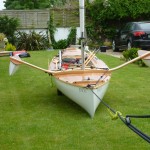
-
Trying out the pig rig in the B&B garden at Rye Harbour
-
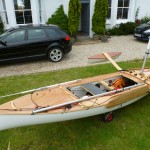
-
Stacey in the Rye Harbour B&B
-
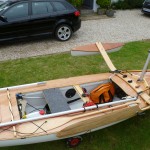
-
Stacey in the Rye Harbour B&B
-
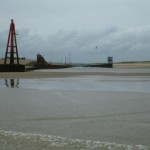
-
Rye Entrance

